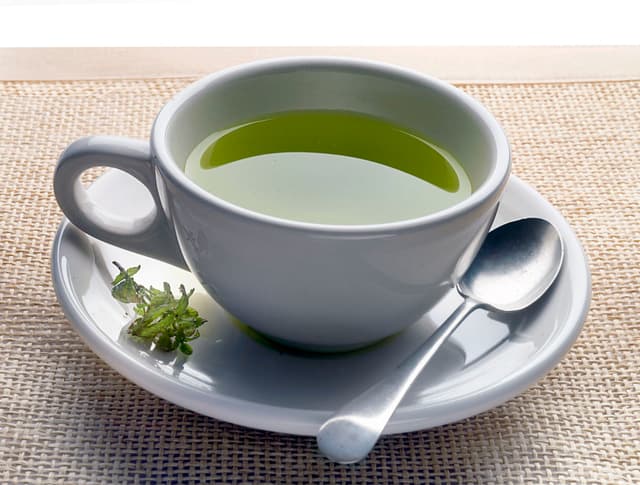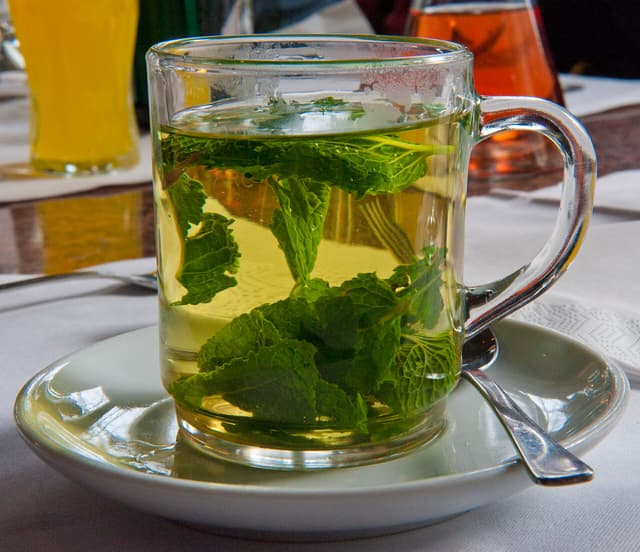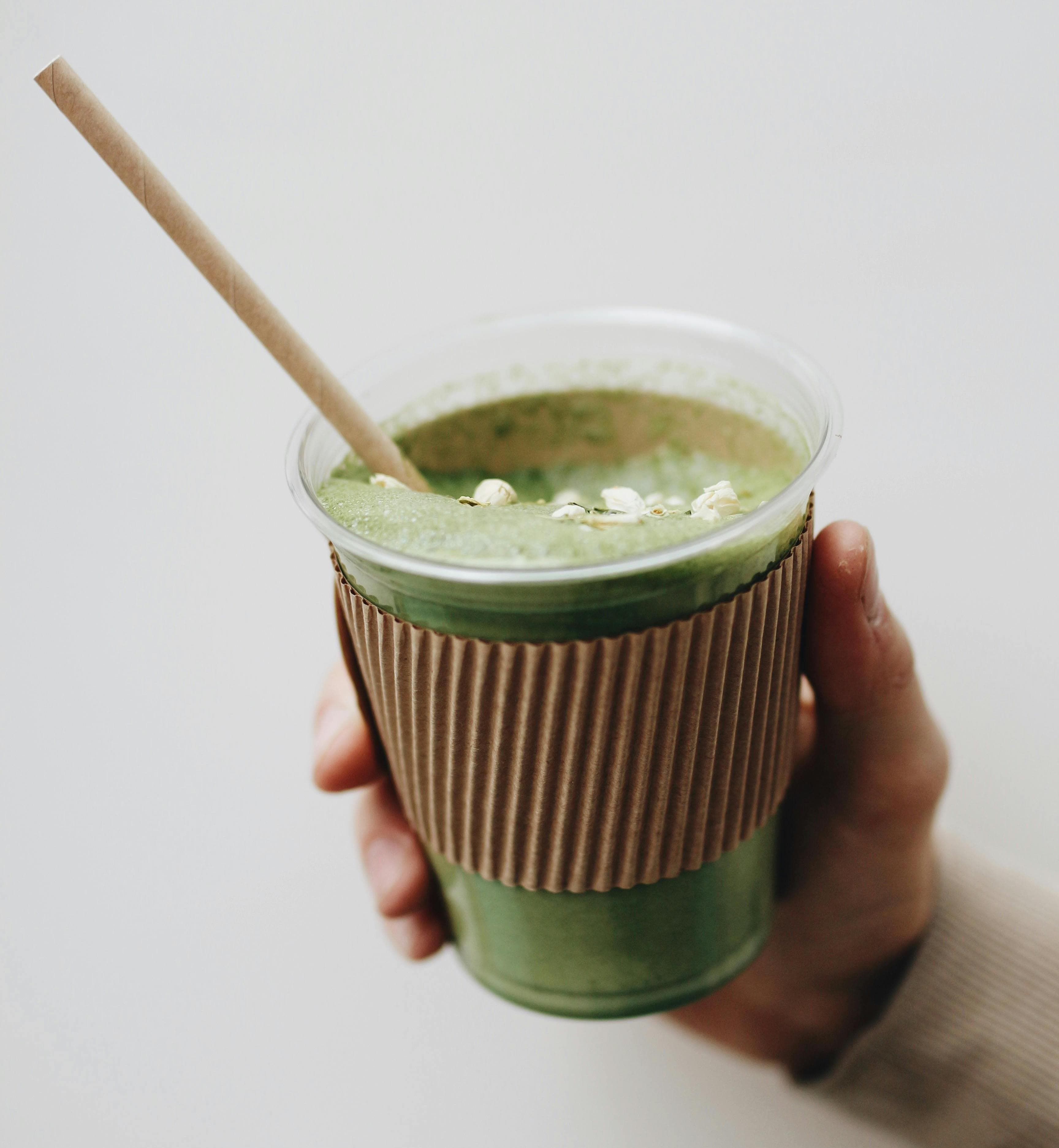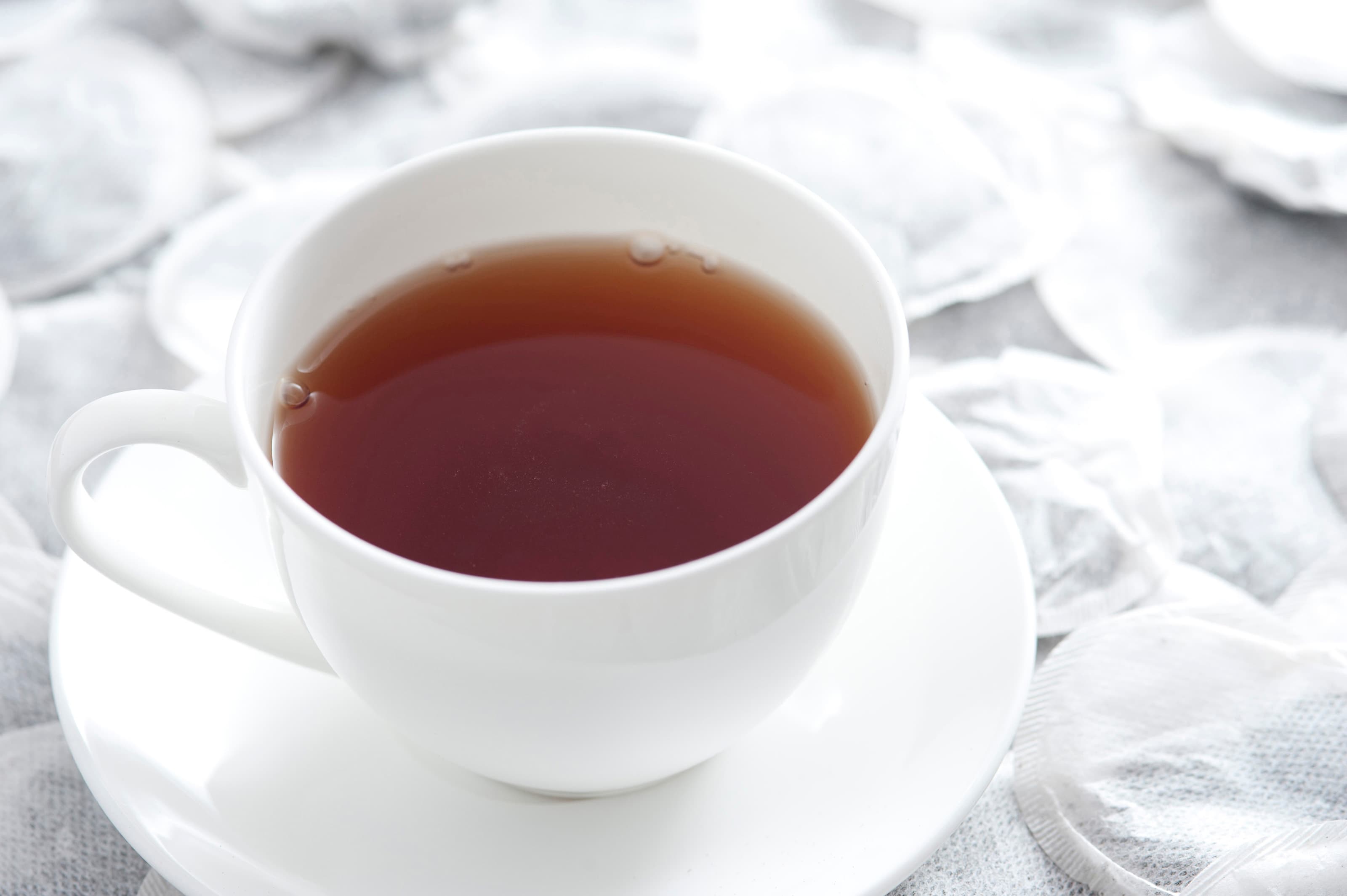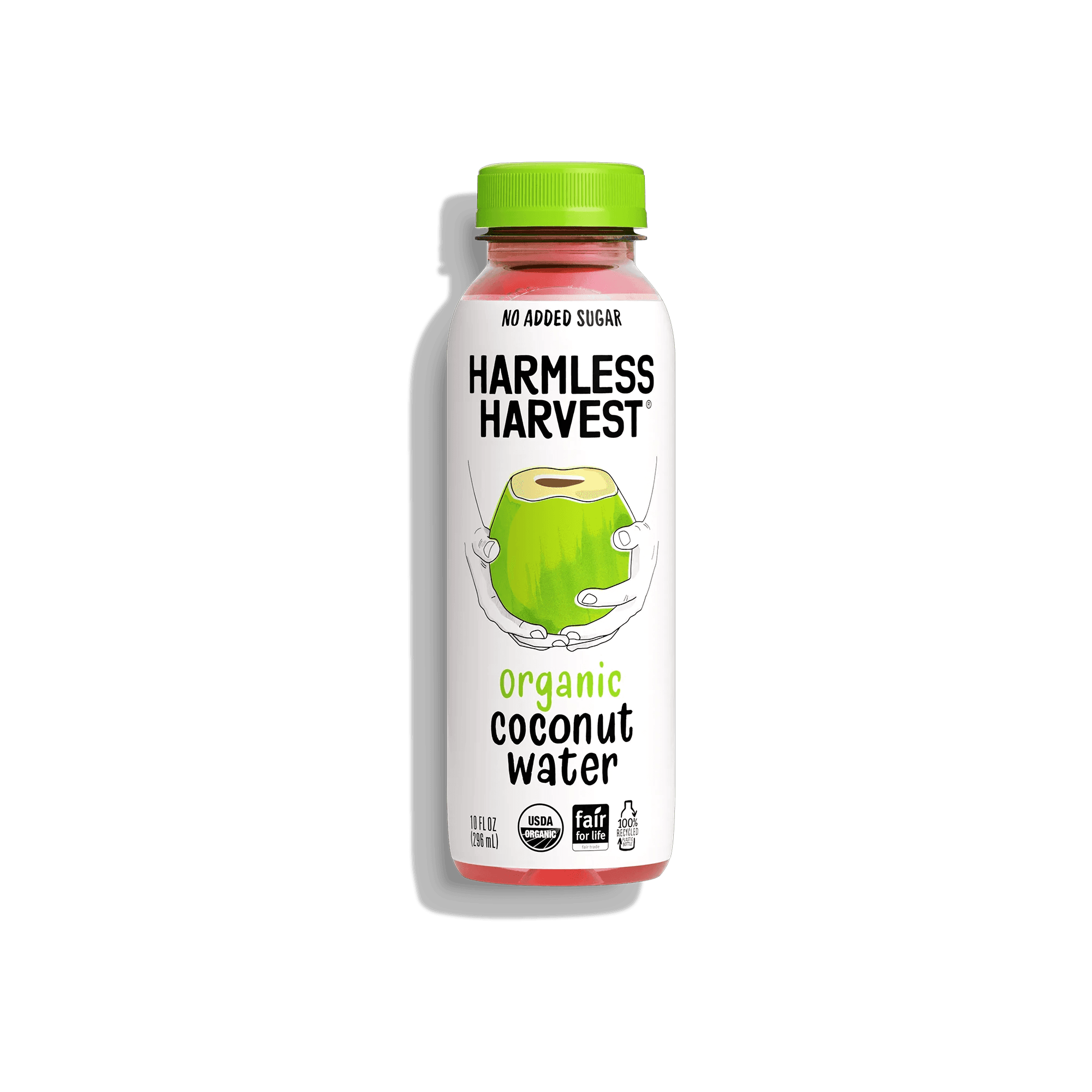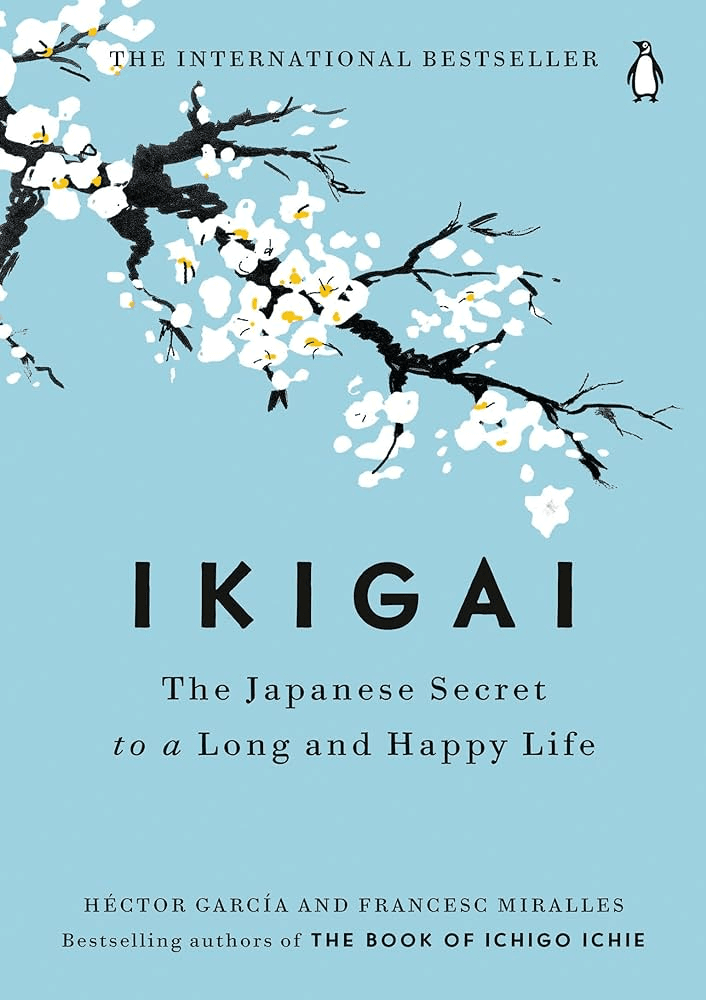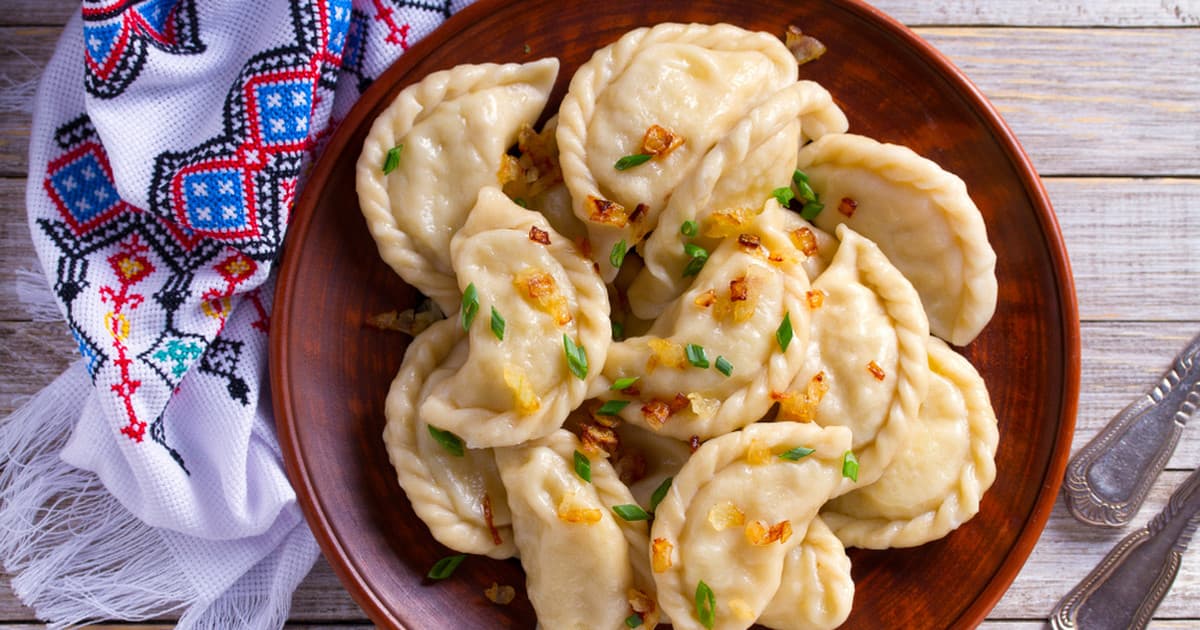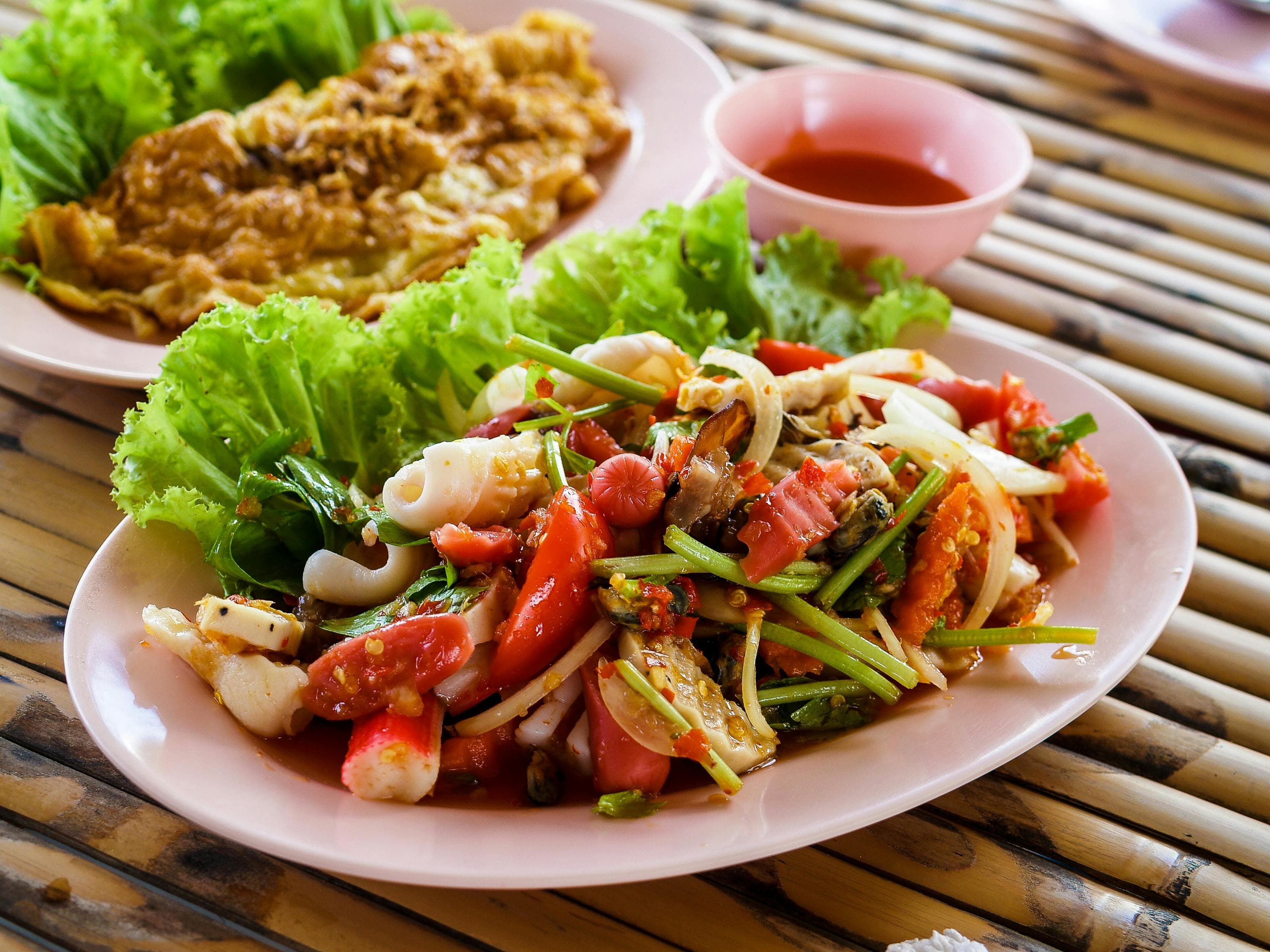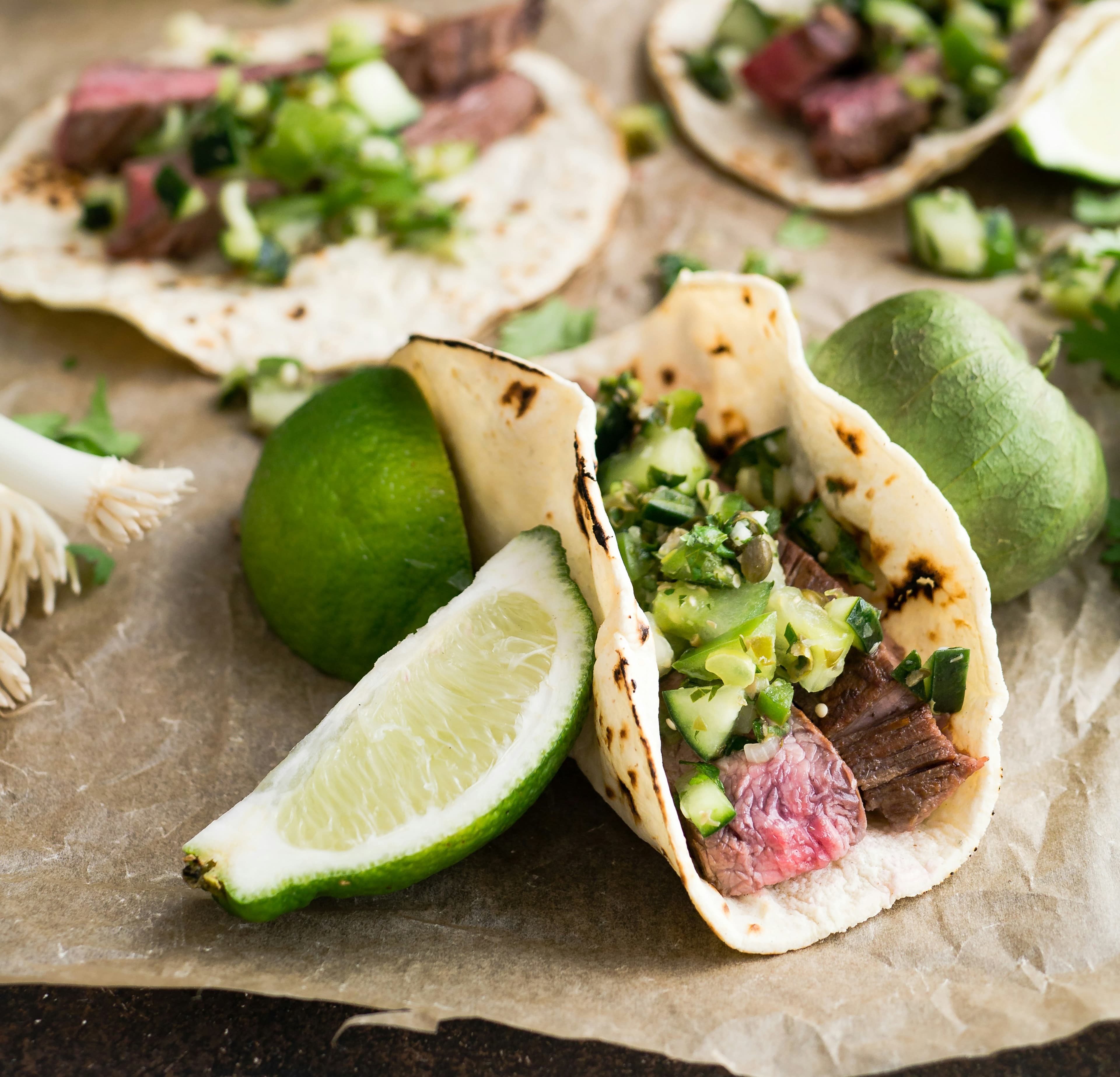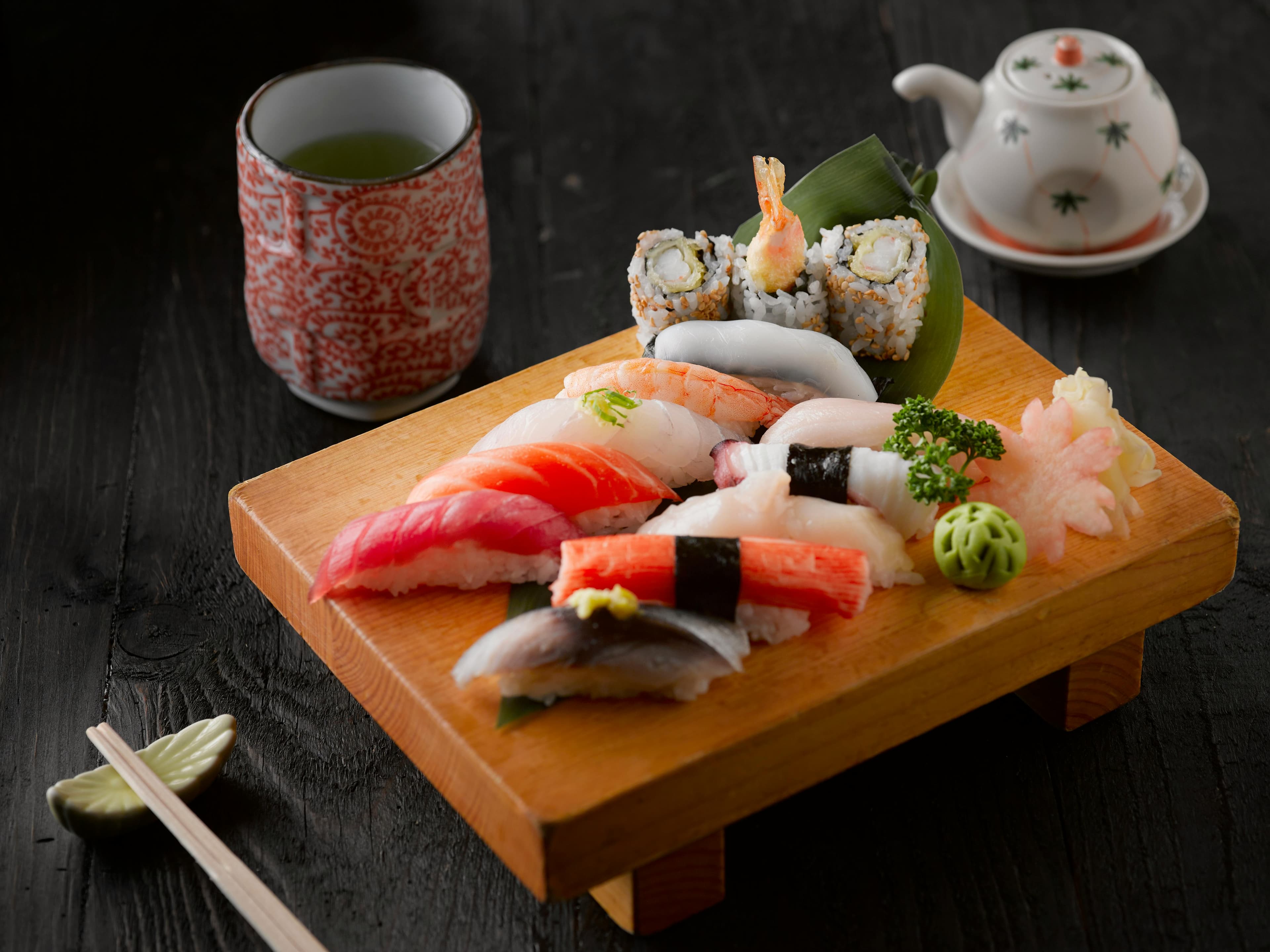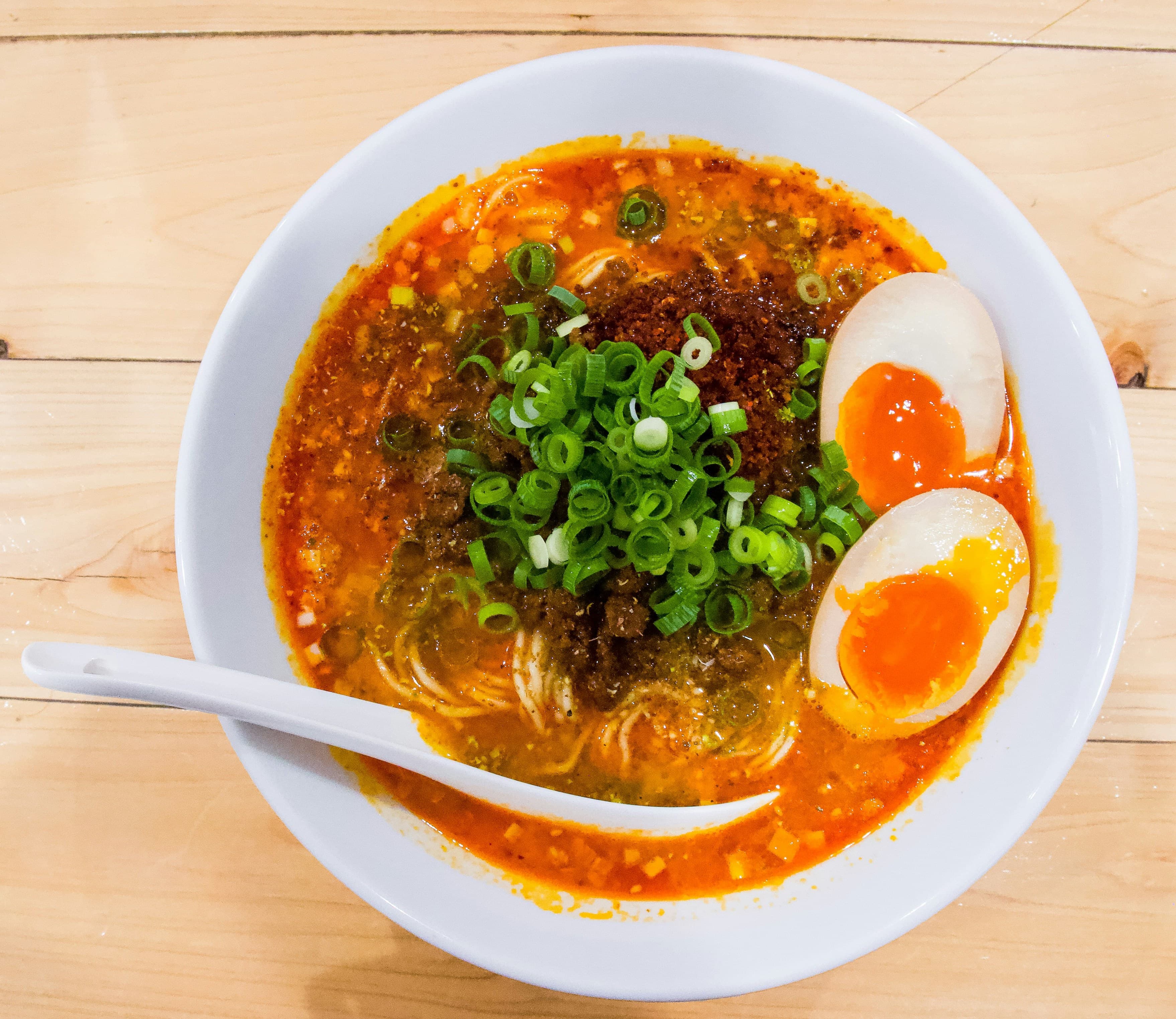Green Tea vs. Mint Tea
Green Tea
Green tea is a type of tea made from the leaves of the Camellia sinensis plant. Unlike black or oolong teas, green tea is made by heating the leaves soon after picking to prevent oxidation. This keeps the leaves green and gives the tea its fresh, grassy taste. It originally came from China but is now popular across East Asia, especially in Japan, Korea, and Vietnam. There are many kinds of green tea, depending on where it's grown, how it's processed, and when it's harvested. For example, Japan’s sencha is steamed, giving it a bright green color and a sweet flavor, while China’s longjing is pan-fired, making it more toasty and mellow. Making a cup is simple: just steep the leaves in hot water, but not boiling—usually around 70–80°C (160–175°F)—for a couple of minutes. If the water is too hot or you steep it too long, the tea can taste bitter. Green tea has been linked to many health claims, but the evidence is mixed. It does have some caffeine, though less than coffee, and contains a...
Mint Tea
Mint tea is a warm drink made by soaking fresh or dried mint leaves in hot water. It’s simple—just mint and water—but the taste is fresh and cool, with a hint of sweetness depending on the type of mint you use. Peppermint tea has a stronger, sharper flavor, while spearmint tea is milder and a bit sweeter. People often drink it to relax or help with digestion. It’s popular in many places around the world—like in Morocco, where it’s made with green tea and lots of sugar, or in India, where mint is sometimes added to chai. In Korea, they have a version called bakha-cha. Making it is easy: boil some water, pour it over the mint leaves, let it sit for a few minutes, and you’re good to go. Some folks like adding honey or lemon, but it’s just as nice plain. The smell alone is pretty calming—fresh, like a garden after rain.
Reviews
Reviewed on 3/2/2024
Too much caffeine for me :(
Reviews
Reviewed on 2/25/2025
Refreshing and caffeine-free. Popular for its curative effects. Anti-inflammatory.
| Item | Votes | Upvote |
|---|---|---|
| No pros yet, would you like to add one? | ||
| Item | Votes | Upvote |
|---|---|---|
| No cons yet, would you like to add one? | ||
| Item | Votes | Upvote |
|---|---|---|
| Caffeine-free | 2 | |
| Refreshing | 2 | |
| Anti-inflammatory | 2 |
| Item | Votes | Upvote |
|---|---|---|
| No cons yet, would you like to add one? | ||
Frequently Asked Questions
Green Tea and Mint Tea serve different purposes. Green Tea is non-oxidized and contains caffeine, making it a good choice for those looking for a boost in energy. However, some users might find the caffeine content too high. Mint Tea, on the other hand, is caffeine-free, refreshing, and has anti-inflammatory properties, making it a popular choice for those seeking a relaxing and curative drink. The better option depends on whether you prefer a caffeinated beverage or a caffeine-free, soothing tea.
Mint Tea is generally better for relaxation because it is caffeine-free and has a refreshing and anti-inflammatory effect. Green Tea contains caffeine, which might not be ideal for those looking to relax.
Both Green Tea and Mint Tea offer health benefits, but they cater to different needs. Green Tea is rich in antioxidants and can help in boosting metabolism and energy levels due to its caffeine content. Mint Tea is caffeine-free, anti-inflammatory, and known for its curative effects, making it good for digestion and relaxation. The choice depends on your specific health goals.
Green tea is a type of tea made from the leaves of the Camellia sinensis plant. It is produced by heating the leaves soon after picking to prevent oxidation, which keeps the leaves green and gives the tea its fresh, grassy taste. Originating from China, green tea is now popular across East Asia, particularly in Japan, Korea, and Vietnam.
There are many kinds of green tea, depending on where it's grown, how it's processed, and when it's harvested. For example, Japan’s sencha is steamed, resulting in a bright green color and a sweet flavor, while China’s longjing is pan-fired, giving it a more toasty and mellow taste.
Making a cup of green tea is simple: steep the leaves in hot water, ideally around 70–80°C (160–175°F), for a couple of minutes. It's important not to use boiling water or steep it for too long, as this can make the tea taste bitter.
Green tea has been linked to various health claims, although the evidence is mixed. It contains some caffeine, less than coffee, and is rich in antioxidants called catechins. Many people drink it for its taste, potential focus-enhancing effects, or simply for the ritual of making it.
Pros of green tea include its rich antioxidant content and potential health benefits. However, some individuals may find that it contains too much caffeine for their liking, as noted in user reviews.
Some users enjoy green tea for its taste and health benefits, while others have expressed concerns about its caffeine content. For example, one user mentioned, 'Too much caffeine for me :('.
Mint Tea has several pros, including being caffeine-free, refreshing, and having anti-inflammatory properties. There are no cons listed for Mint Tea, making it a popular choice for those looking for a soothing beverage.
Mint Tea is made by soaking fresh or dried mint leaves in hot water. It is a simple drink that consists of just mint and water, although some people like to add honey or lemon for extra flavor.
There are different types of Mint Tea, with peppermint tea having a stronger, sharper flavor, while spearmint tea is milder and a bit sweeter. Additionally, variations exist in different cultures, such as Moroccan mint tea made with green tea and sugar, and bakha-cha in Korea.
Mint Tea is often consumed for its relaxing properties and potential digestive benefits. It is also noted for its anti-inflammatory effects, making it a soothing choice for many.
To prepare Mint Tea, simply boil some water, pour it over fresh or dried mint leaves, let it steep for a few minutes, and enjoy. It's a quick and easy process that results in a refreshing drink.
